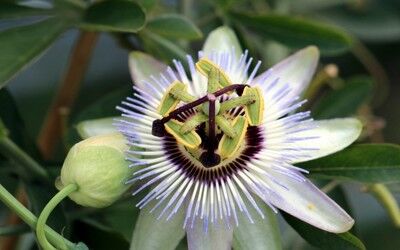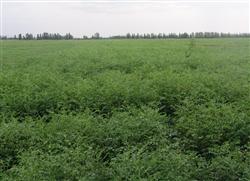morphological characteristics Learn more about morphological characteristics
-
Morphological characteristics of Astragalus dawuriensis efficacy and function of Astragalus dawuriensis

Morphological characteristics of Astragalus dawuriensis efficacy and function of Astragalus dawuriensis
2019-03-01 -
[expert interpretation] morphological characteristics and control methods of chrysanthemum downy mildew
![[expert interpretation] morphological characteristics and control methods of chrysanthemum downy mildew](https://www.mysheen.com/static/assets/images/nopic.gif)
Downy mildew of chrysanthemum is one of the main diseases of chrysanthemum, which often occurs in the mountain areas with average temperature of 16.4 ℃-19.0 ℃, annual rainfall of about 1500mm and low temperature and heavy rain in spring. So what are the morphological characteristics and control methods of chrysanthemum downy mildew? Next, let's follow.
2020-11-09 [ expert interpretation ] chrysanthemum downy mildew disease morphological characteristics and -
[expert interpretation] morphological characteristics and control methods of chrysanthemum downy mildew
![[expert interpretation] morphological characteristics and control methods of chrysanthemum downy mildew](https://www.mysheen.com/pic/20190407/cf2272fb8be02d7bbbed745b7fa14936.jpg)
Downy mildew of chrysanthemum is one of the main diseases of chrysanthemum, which often occurs in the mountain areas with average temperature of 16.4 ℃-19.0 ℃, annual rainfall of about 1500mm and low temperature and heavy rain in spring. So what are the morphological characteristics and control methods of chrysanthemum downy mildew? Let's follow the forestry experts to understand these problems.
2019-04-07 -
Culture methods of soap grass morphological characteristics of soap grass

Culture methods of soap grass morphological characteristics of soap grass
2019-03-01 -
Morphological Characteristics and Growth Characteristics of Main Bud

Morphological Characteristics and Growth Characteristics of Main Bud
2018-07-24 -
The latest star of the sky price of the morphological characteristics of the star

The latest star of the sky price of the morphological characteristics of the star
2019-03-01 -
The morphological characteristics and growth environment of plant flower, clock flower and growing environment

The flower language of plants allows you to understand the morphological characteristics of clock flowers and their growing environment. Clock flower is a kind of clock flower family, clock flower evergreen vine, growing in the tropical rain forests of South America, its shape is very similar to the dial on the clock, so it is called "clock"
2019-06-25 -
Main morphological characteristics of Nelumbo nucifera

Scientific name: tropaeolummajusl alias: Golden Lotus, Cardinal morphological characteristics: dry Trollius is a perennial slightly fleshy herb, often cultivated in one or two years. The stem is slender, semi-trailing or lying grayish green, up to 1sm. Leaves alternate, suborbicular, long stipitate
2018-12-20 -
Morphological characteristics and suitable seed environment of perennial herbaceous ginseng

Morphological characteristics and suitable seed environment of perennial herbaceous ginseng
2018-06-29 -
Morphological characteristics and suitable growth Environment of Perilla frutescens

Morphological characteristics and suitable growth Environment of Perilla frutescens
2018-06-29 -
Morphological characteristics of Polyporus umbellatus and its suitable environment

Morphological characteristics of Polyporus umbellatus and its suitable environment
2018-06-29 -
Morphological characteristics and suitable planting environment of Glycyrrhiza uralensis

[morphological characteristics] Glycyrrhiza uralensis is a perennial herb with a height of 30cm and 100cm. Covered with white pubescence and glandular hairs. Aboveground stems erect, lower lignified, branchlets angular, green. Leaves alternate, odd status compound leaves. Leaflets 3-8 pairs, ovoid or ovate-elliptic, entire, apical leaflet larger. The general situation.
2018-07-18 -
Morphological characteristics and suitable environment of Pinellia ternata

[morphological characteristics] perennial herbs with a height of 15cm and 30cm. Tubers are spherical or oblate. The leaves are basal, long stalked; the seedlings are simple, ovate-cordate, apex pointed, entire; after the second and third year, the leaves are 3-foliolate, elliptic to lanceolate. There are bulbs on the inner side of the lower part of the petiole, which can be used as propagation material. Monoecious; flowers small, light green. [suitable environment] like moist, afraid of drought, afraid of strong light; shade-resistant, cold-resistant, tuber can survive the winter naturally. It is appropriate to choose sandy loam with moist, fertile, deep and neutral soil.
2019-01-11 -
Morphological characteristics and suitable environment of Lycium barbarum

[morphological characteristics] Lycium barbarum is a deciduous shrub with a height of 1.5 to 2 meters. Bark grayish white, smooth when young; dark brown, furrowed when old. The crown is open, the branches are slender, and the apex is usually curved and drooping, often in the shape of spines. Leaves alternate or several fascicled, leaf blade ovate-lanceolate or narrowly Obovate, entire, flowers solitary or clustered in leaf axils, Corolla pink or purplish red, berries elliptic or ovoid, red or orange when ripe. [suitable environment] like cool climate, light, cold, drought, salt and alkali tolerance, strong adaptability, deep and fertile soil layer
2019-01-15 -
Morphological characteristics of privet?

The morphological characteristics of Ligustrum lucidum are: Ligustrum oleaceae trees, generally about 6 meters high. Leaves leathery and fragile, ovate, broadly ovate, elliptic or ovate-lanceolate, 6 to 12 cm long, glabrous. The panicle is 12 to 20 cm long. Drupe orbicular, purple-blue, ca. 1 cm. Habitat distribution in mixed forests or forest margins and valleys.
2019-01-16 -
Morphological characteristics of Glycyrrhiza uralensis and suitable seed environment

[morphological characteristics] Glycyrrhiza uralensis is a perennial herb with a height of 30cm and 100cm. Covered with white pubescence and glandular hairs. Aboveground stems erect, lower lignified, branchlets angular, green. Leaves alternate, odd status compound leaves. Leaflets 3-8 pairs, ovoid or ovate-elliptic, entire, apical leaflet larger. Raceme, axillary, pedicel very short, with an ovate bracteole below base, calyx bell-shaped, green, Corolla butterfly, purple or blue purple flowers. The fruit is a pod, narrowly rectangular, bent into
2019-01-16 -
Morphological characteristics and efficacy of Pueraria lobata

Morphological characteristics and efficacy of Pueraria lobata
2019-03-05 -
Morphological characteristics of Lentinus edodes

Lentinus edodes, also known as Lentinus edodes, is one of the world-famous edible fungi. Mainly distributed in China, Japan, Korea and Vietnam and other countries. Lentinus edodes cultivated in China is mainly produced in Zhejiang, Fujian, Jiangxi, Guangxi, Guangdong, Anhui and other places, while sawdust cultivation of Lentinus edodes is mainly in Shanghai, Jiangsu, Zhejiang, Fujian, Guangdong and other coastal areas. The morphological characteristics of Lentinus edodes are composed of mycelium and fruiting body, and the fruiting body of Lentinus edodes is composed of cap, fold and stalk.
2019-01-16 -
What are the morphological characteristics of the geranium?

The morphological characteristics of the geranium: the plant height is 30 cm to 60 cm, the whole plant is covered with fine hairs and glandular hairs, with peculiar smell. The stem is fleshy. Leaves alternate, orbicular to reniform, usually with horseshoe markings in the leaf margin. Umbels terminal, total peduncle long, flowers are white, pink, flesh red, light red, bright red and other colors, there are single double, and leaves with white, yellow, purple markings of the color leaf varieties. Flowering May to June, in addition to summer dormancy, if the environment is suitable, can continue to blossom. Like cold, but also not resistant to cold. Avoid high temperature, like plenty of sunshine, like fertile loam with good drainage
2019-01-16 -
The morphological characteristics of [Cymbidium]
![The morphological characteristics of [Cymbidium]](https://www.mysheen.com/pic/20190305/6f5b5a51b56985cf0d25685ce3ab8489.jpg)
The morphological characteristics of [Cymbidium]
2019-03-05
